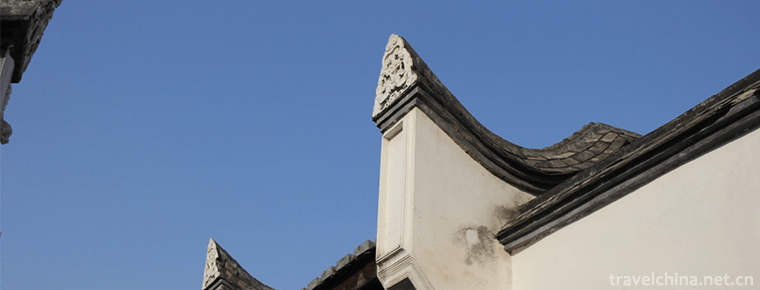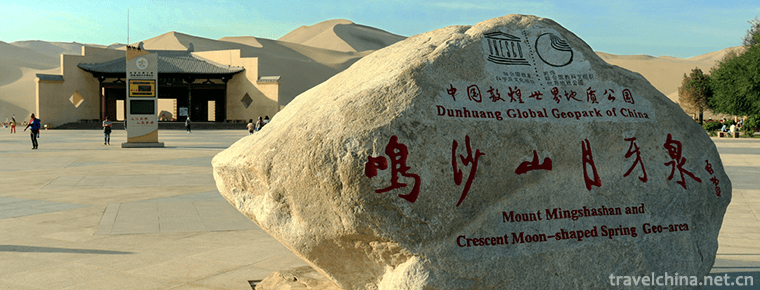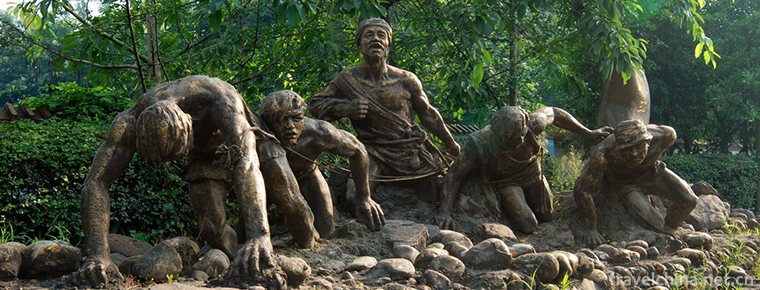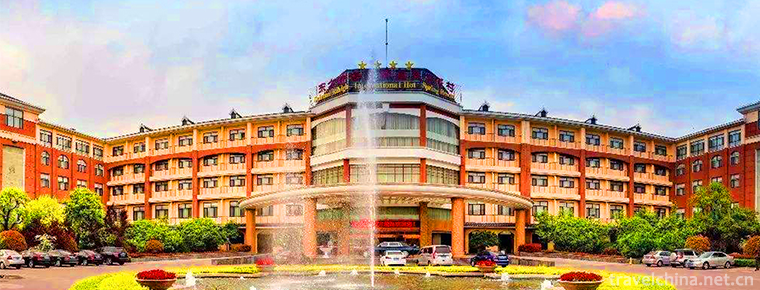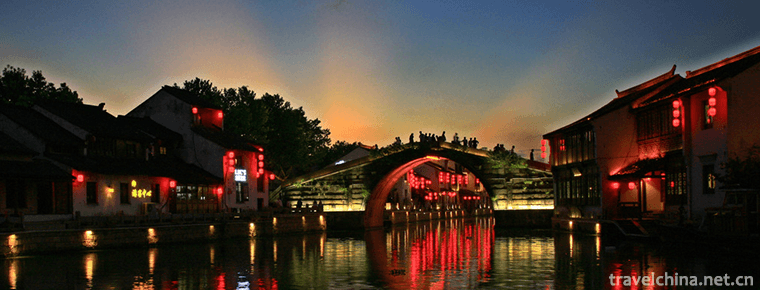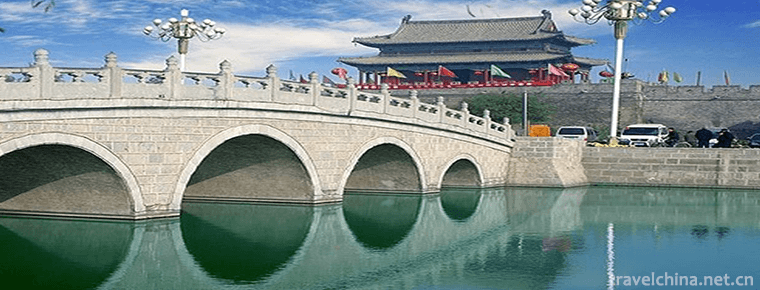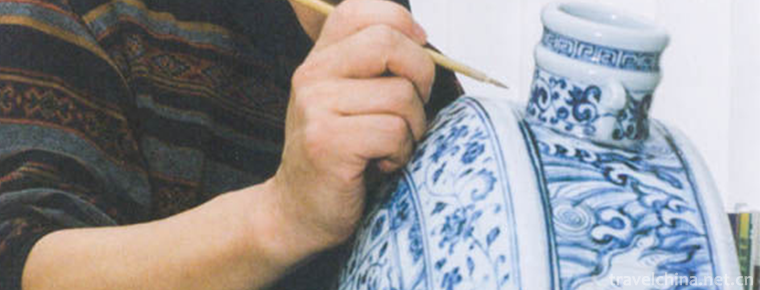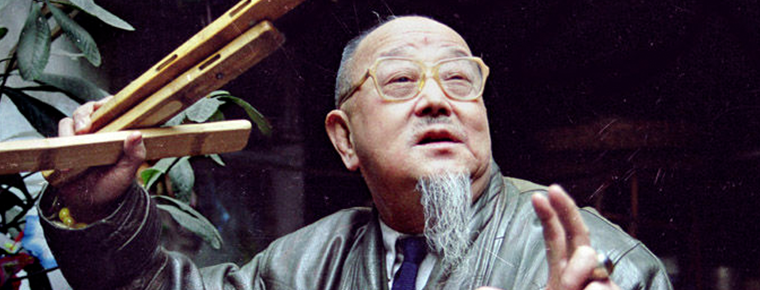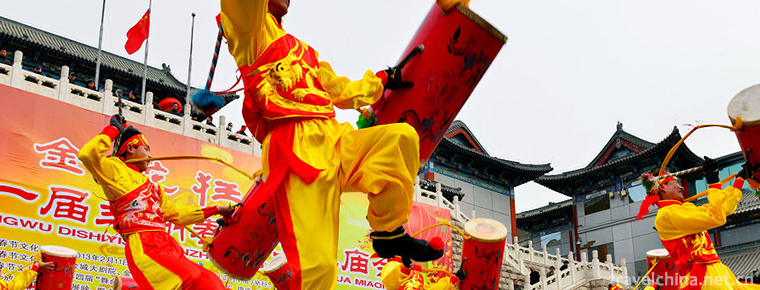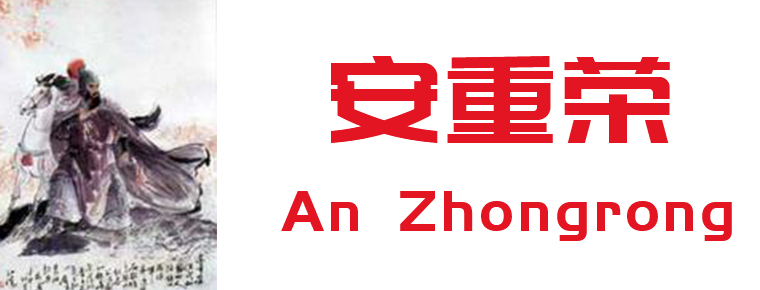Qingshui rock
Qingshui rock
National AAAA tourist attractions, built in the Northern Song Dynasty, were rebuilt in the Ming Dynasty. In the Northern Song Dynasty, the priest Puzu Zen Buddhist monk once practiced here and saw the clear spring water, so he renamed the temple. It is located in Fujian Province, Quanzhou City, Anxi County, Penglai Town, Penglai Mountain. Ancient known as Zhang Yanshan, beautiful mountains and waters, beautiful scenery, peak towering, peak ring, emerald Pidan, hazy clouds. Often in the vast sea of fog and clouds, such as "Penglai Wonderland".
brief introduction
Qingshuiyan is located in Penglai Mountain, 16 kilometers northwest of Chengguan, Anxi, Fujian Province, the hometown of Tieguanyin, a world famous tea. The total area of the scenic spot is 11.1 square kilometers, and the main peak is 763 meters above sea level. It is a scenic spot with Qingshui Rock Temple as the main body, with the culture of the ancestors of Qingshui as its characteristic, integrating religious pilgrimage, ecological tourism, folk display, leisure and vacation as one. Now it is a national AAAA-level tourist area, a national key cultural relics protection unit, one of the first national cultural relics protection projects involving Taiwan, a Fujian provincial scenic spot, "Faith and Customs of Qingshui ancestors" is listed as a national intangible culture, and "Qingshuiyan" and "Emperor" trademarks are rated as "Famous trademarks of Fujian Province".
Main attractions
Lion throat: Behind the ancestor's palace, there is a huge rock resembling the head of a giant lion. The Shakya Tower is built under the "lion head" and has a stone resembling the mouth of a lion. It can accommodate dozens of people. The lion's mouth also has a hole nearly two feet in diameter, commonly known as "the throat of the lion". "Lion Throat" springs trickle, the breeze is clear, like a lion panting, legend has it that this cave leads directly to Quanzhou.
Luo Hansong: beside Jue Lu, he is a spiritual ancestor of Qingshui. Branches facing the temple, the old tree crosswise branches, straight up, dare not intrude, early smoke, 900 years old, do not change its Ke, branches toward Buddha Yan. According to legend, the Chinese couplet grows three inches a year, while the thundering electricity is three inches short. So the thousand-year-old trees are only about 13 meters high. There is an ancient poem "Yong Luo Hansong" which says: "In the past, it was like a Bodhi tree, but now it is planted by hand: Everything is empty and nobody is bad, leaving only the skeleton and the old cloud peak".
Famen of Clear Water: Leaving Haotiankou of the ancestral hall of Penglai, they climbed down the steps and soon arrived at Famen. Famen is similar to the Mountain Gate Hall of Buddhist temples. They worship four Dharma gods, Zhao, Wang, Su and Li. It is said that they were mountain ghosts and were enslaved by their ancestors'hearts as Dharma gods. Their magic skills are superb and they assisted their ancestors in exorcising evil spirits in town.
Branches facing north: Ancient camphor of towering sky grows in a unique geographical location. Legend has it that the tree was planted by the ancestor of Qingshui. It is 31 meters high and 7 meters round. The branch canal stretches north, so it is called "branch facing north".
Chueh Ting: It was built on the top of Zhongyan Xie Mountain. It was originally a tea pavilion. In the 14th year of Wanli in Ming Dynasty (1586), Yiling Liao Tongchun rebuilt the tea pavilion while advocating "Chueh Lu". The title of "Jue Ting" refers to the meaning of "returning to the past and thinking about it at once". Liao Tongchun's Yongjue Pavilion poems: "When a cage falls, it changes every year, and almost loses five doubles for life; when you see and feel the way to Xianlu, you can listen to the sound of the spring and the murmur of Sanskrit." Danbi left its name Yun Turun, Lin Guan passed on Runbi to Runbi, and all the tourists were Yanxia guests, and Qianqigangtou had a good alliance with each other.
Lunyin altar: also known as stone ark altar, stands opposite JueTing. The music circle was built opposite Chueh Ting. Built in 1317, the altar is 3.3 meters high and has a small stone pagoda. On the front of the altar, Yinshui ancestors engraved four times the enclosed Lonyin inscriptions in Southern Song Dynasty. On the top, the relief dragon and the inscriptions of "Emperor's edict" and "Yin inscriptions in response to Master Guang Hui Tzu Chi's benevolence" were engraved. On the left, Yinshui inscriptions could not be postponed until the year was rebuilt. The seal inscriptions and the rebuilding records of the rocks are of great historical value to the study of the history of Qingshui ancestors and Qingshui rocks. There are poems chanting Lun music altar way: "Stone cabinet Chonglong town, elegant weft-planted letters; empty hills and grass are vivid, seven hundred years of Buddha's national light."
Vacuum Tower: Legend has it that the ancestors were buried behind the rocks and built pavilions over them. In the first four years of Jiading in Southern Song Dynasty (1121), the villagers were monks before their ancestors, teachers and students. They realized the vacuum and named it "vacuum tower".
Shengquan: Not far from Fangjiantang, the spring springs from stone, endless years, sweet and soothing, it is said that drinking can clear the heart and remove disease, bathing can dispel pollution, bring back spraying wine can drive disaster condensation auspicious, to protect a safe family, so the name of Shengquan. There are poems chanting the holy spring way: "Sensen headland listen to the ripples, a clear song has the Holy spring; wash the heart with water to cultivate wisdom, how many people come here to realize the source of inspiration?"
Looking at Tianguzhang: On the left top of the vacuum tower, there is a broken tail of ancient camphor, about 10 meters high, about 6.6 meters outside, hollow tree heart, about 1.86 meters in diameter. Several people sitting in the tree hole can peep at the vault, which is inexplicable, commonly known as peeping at Tianguzhang. More surprising is that hollow ancient camphor trees grow two new techniques every spring, vibrant, also known as "mother and son trees".
Fang Jiantang: Fang Jiantang, also known as the floating fir pond, is said to have bought Chinese fir in the Neishan Mountains for lack of gigantic girders during the construction of rocks. How many fir trees do you want to buy? The grandfather said he would buy all the "tailless firs" in the mountain forest. The owner of the fir had known that there were very few fir trees in the mountain forest, and many of them were not timber. He immediately accepted a few dollars and promised that the tailless fir in the mountain forest would be cut down and removed within five days. The grandfather was happy with the results. After returning to the rock, in the pits and marshes, the disciples were asked to dig a square pond and drill a hole in the pond, which everyone did not understand. The next night, the wind burst, and the wind was stronger in the Inner Hills. Many Chinese fir trees were cut to their tails and waists. On the third day, the ancestor went to fetch the fir, and the fir owner kept his promise and allowed the ancestor to cut it down. The ancestors chopped down the big timber and threw it into the ditches where the rocks fell, returning to the rocks leisurely. Suddenly, the fir at the mouth of the ditch disappeared. Little Shami was so surprised that he pulled out nine big firs from his hole one after another. He wanted to think that the beams and pillars of the Yansi Temple were enough. He could not help crying out, "Enough!" As soon as the voice fell, the tenth Chinese fir tree, which had just emerged, could no longer be pulled out. Up to now, the eyes of Fang Jiantang still reveal the head of Big Fir, which the world is fond of talking about.
Sanzhong Temple: The temple was built on the top of Zhongyan Xie Mountain. When was it built? Former Qi Zhang Xun, Xu Yuan and Wu Zixu, later Ming emperor Zhu Yuanzhang invited Wu Yuxu out and offered sacrifices to four loyal spirits. Legend has it that the temple worshipped Zhang Xun, Xu Yuan and Wu Zixu. Zhu Yuanzhang, the late emperor of the Ming Dynasty, invited Wu Zixu out and Yuefei in. From then on, the Sanzhong Temple of "the world" worshipped Zhang Xun, Xuyuan and Yuefei. Yan worshipped Zhang Xun as the leader. Therefore, it is called Zhangyan Mountain, which is also called Zhangyan Mountain. During the Song and Yuan Dynasties, the ancestors built Qingshuiyan on the side of Zhangyan, and moved Zhang Yan to Juotinglun, which was named Sanzhong Temple. I don't know when Guan Yu was worshipped in the temple and became "three loyal temples and four idols".
Hai Huiyuan: Hai Huiyuan was rebuilt for the Republic of China, offering sacrifices to Bodhisattvas such as Amitabha Buddha, Guanyin of the South China Sea, and the supremacy of the general situation. There are eighteen Arhats on both sides with extraordinary momentum and distinctive features.
Qingshui Mountain Gate: The Qingshui Mountain Gate was newly built after the autumn of 1998, at the entrance of Shangyan at the head of Heqian Bridge in Yangzhong. The central gate of Fangzhong is 5.5 meters high and 4.00 meters wide, and the left and right side doors are 5.00 meters high and 1.8 meters wide. The top glazed tile covers the eaves and the water comes out. The total height is 8.00 meters. It is solemn and dignified. Shifang inscribes the number of cards inscribed by Mr. Yu Yu Yu, a professor and calligrapher of the Chinese Buddhist Academy, and the couplet of "visiting thousands of Buddhas and sitting down; sharing ten fangchun". Fangshang side pillar inscribed in regular script, "the name of the construction of asphalt highway" is written by Wang Aichen of Quanzhou.
Swordstone: Not far from the ancient camphor, there is a legend that Qingshui ancestor's sword cut half of the stone, the famous test swordstone. There are poems chanting: "Zhuo Xiyou, the master of the day, is full of brilliant sword and desire to cross autumn; split this factory stone into two parts, shooting bullfighting in the horrible sky".
Penglai Zudian: Penglai Zudian is the main building of Qingshuiyan, which was founded in Song Dynasty. It is a pavilion-style building on the top of Zhongyan Mountain. It consists of Haoweikou, Zushi Hall and Sakya Hall. On both sides of the hall are Tanlu Hall, Guanyin Hall, Fangming Hall, Zhaifang Hall, Living Room and so on. Ninety-nine pavilions are handed down in succession. Penglai Zudian is a key cultural relic preservation unit in Fujian Province, which has its own characteristics in architectural layout, architectural style, carving technology and decoration technology.
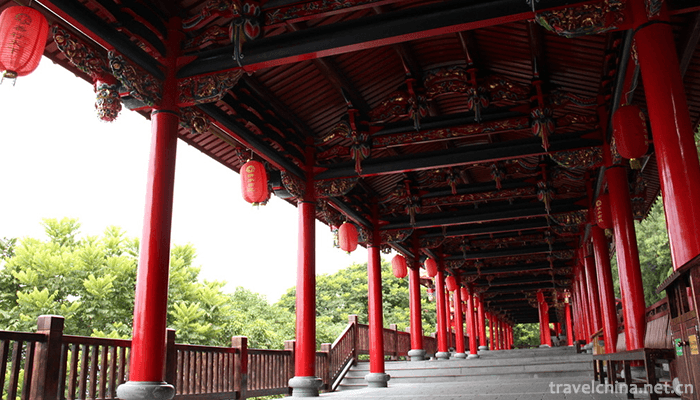
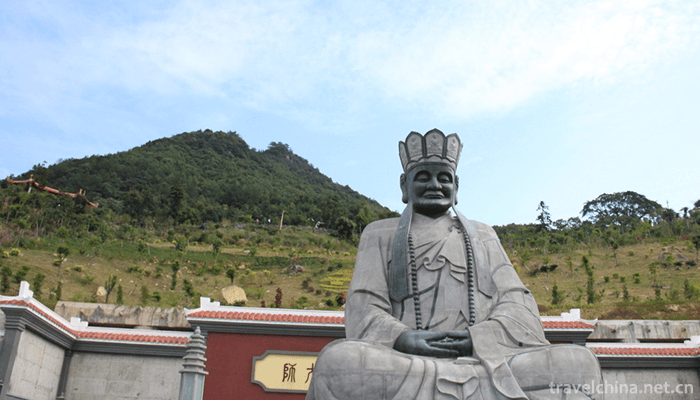
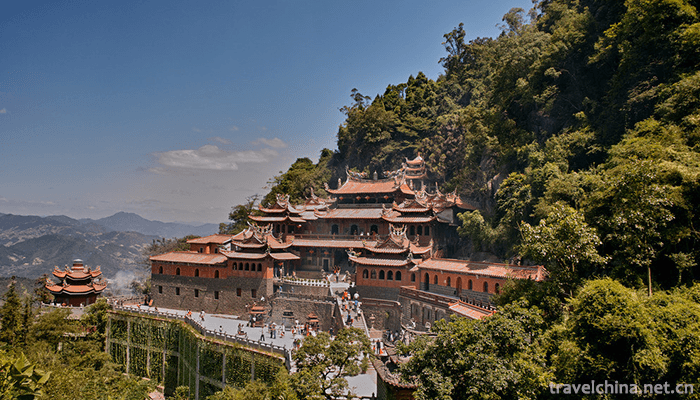
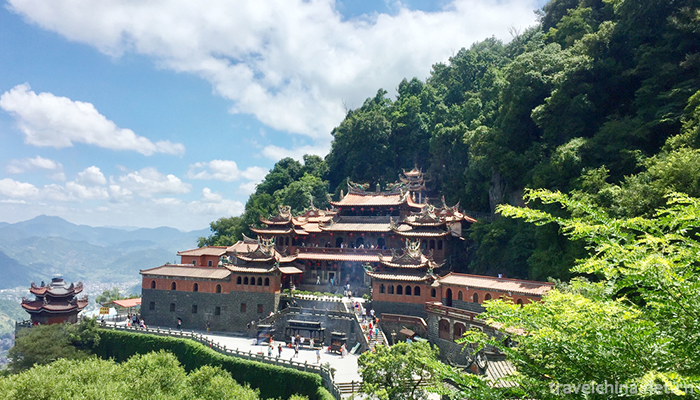
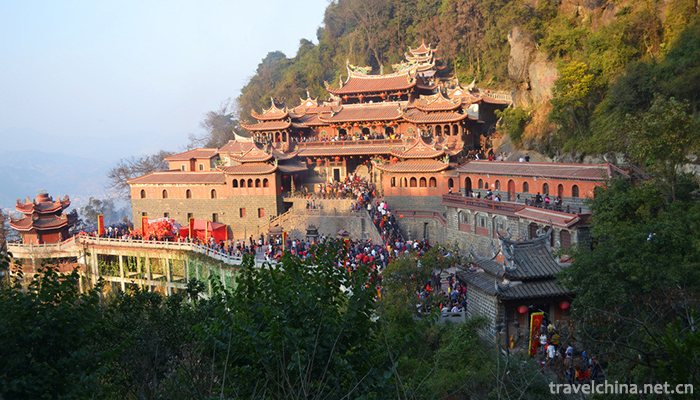
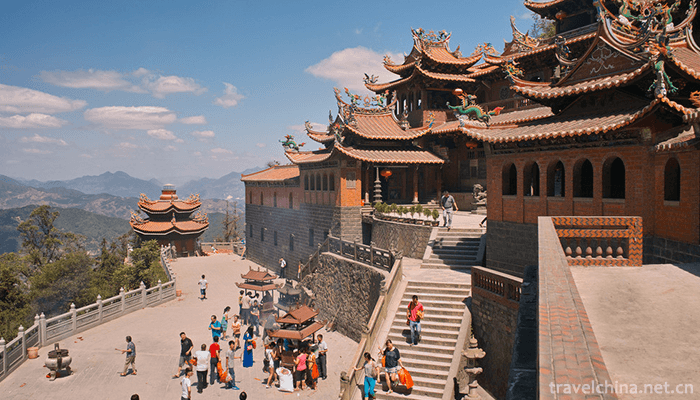
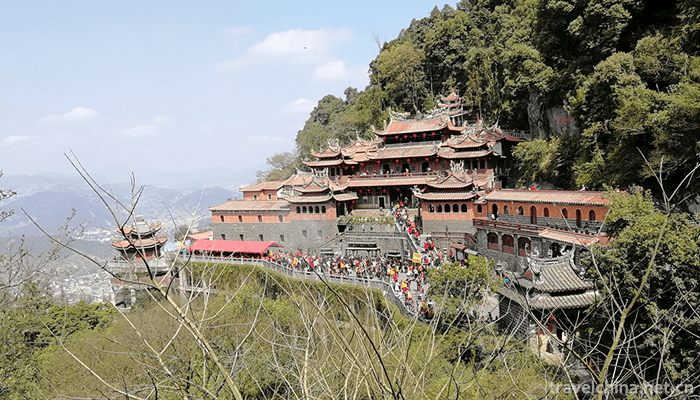
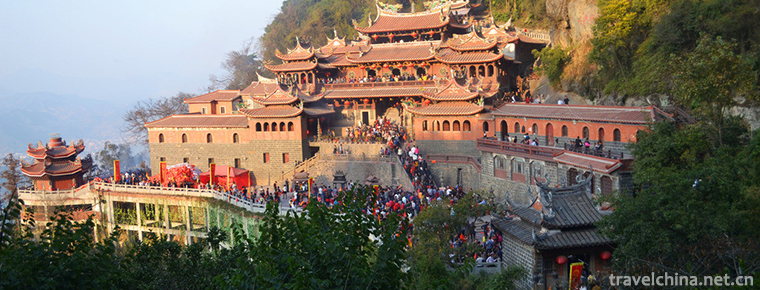
Qingshui rock
-
Three Lanes and Seven Alleys
Three Lanes and Seven Alleys(Sanfang Qixiang) is a national 5A tourist attraction, which is the only remaining part of the old city of Fuzhou
Views: 241 Time 2018-12-08 -
Mingsha Mountain Crescent Spring Scenic Area
Mingsha Mountain Crescent Spring Scenic Spot is located 5 kilometers south of Dunhuang City, Gansu Province. It covers an area of 312,000 square kilometers
Views: 92 Time 2018-12-12 -
Shennong Creek Scenic Area
Shennongxi, originating from the main peak of Shennongjia, flows through Badong County, Hubei Province. It travels from north to south through deep mountain canyons, and converges into the Yangtze Riv
Views: 175 Time 2018-12-12 -
Shanghai Ocean Aquarium
Shanghai marine aquarium is located at 1388 Lujiazui Ring Road, Pudong New Area, Shanghai, China, next to the Oriental Pearl Tower. Singaporean Xingya Group and Chinese Poly Group have jointly
Views: 206 Time 2018-12-19 -
Oriental Ruihai International Hot Spring Resort
Oriental Ruihai International Hot Spring Resort is a hot spring real estate project jointly invested by Shandong Sanzhong Group and Shandong Xingsheng Mining Group, with a total investment of 300 mill
Views: 184 Time 2018-12-20 -
Qingming Bridge Ancient Canal Scenic Area
Qingming Bridge Ancient Canal Scenic Area is located at the southern end of Wuxi city center, covering about 44 hectares of scenic area. The scenic spot is composed
Views: 182 Time 2019-02-07 -
Shangqiu Ancient Culture Tourist Area
Shangqiu Ancient Culture Tourist Area is located in Suiyang District of Shangqiu City. Based on Shangqiu Ancient City, the area of 12.6 square kilometers is covered by Guidefu City
Views: 129 Time 2019-02-08 -
Restoration Techniques of Ancient Ceramics
Ancient ceramic restoration technology is a special artistic creation of comprehensive modeling, sculpture, color, calligraphy, painting, chemical industry, etc. Ancient Ceramics Restoration must be c
Views: 701 Time 2019-05-01 -
Money board
Money board is a traditional rap art in Sichuan, Guizhou and other places. It originated in Chengdu and Chongqing more than 300 years ago, and gradually spread to Yunnan
Views: 176 Time 2019-05-07 -
Lanzhou Taiping Drum
Lanzhou Taiping Drum, a traditional dance in Lanzhou City, Gansu Province, is one of the national intangible cultural heritage.
Views: 273 Time 2019-05-10 -
Wood Engraving Picture
In Chinese folklore, New Year's pictures are the symbol of the New Year. If they are not pasted, they will not be counted as the New Year's Day. New Year pictures are not only decorations for festival
Views: 399 Time 2019-06-05 -
An Zhongrong
An Zhongrong (- 942 years), Zi tie Hu, Shuozhou (now Shuozhou, Shanxi). The generals of the Five Dynasties and Ten Kingdoms during the late Tang Dynasty and the Late Jin Dynasty.
Views: 289 Time 2019-09-11
